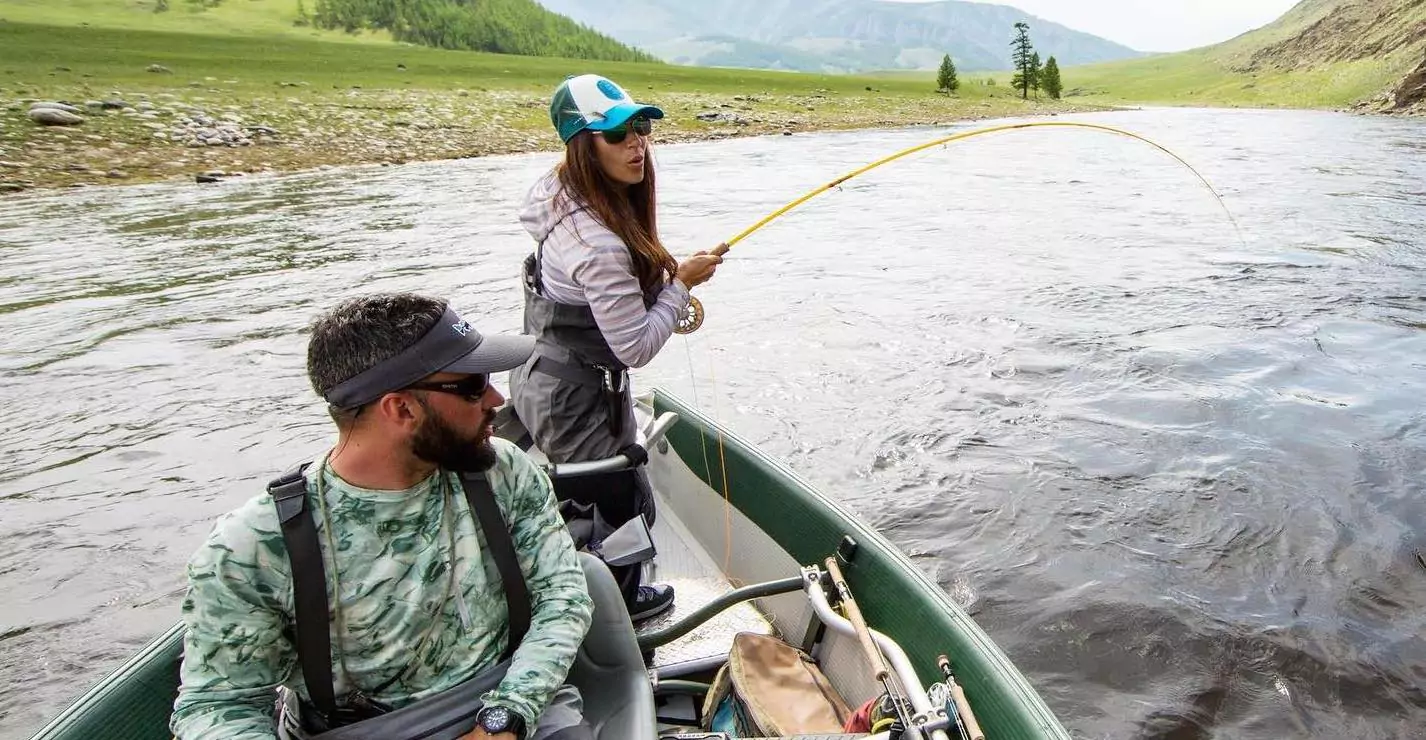We’ve all been there. Your line pulls taut, pulse quickens, and you set the hook fiercely into a solid, unmoving object. You fire off a string of expletives, pulling and jerking the rod—more an attempt to vent frustration than an actual effort to free the line.
A snag can infuriate even the calmest angler. I’ve seen rods snapped in fits of anger and watched friends humiliate themselves, splashing and flailing with Elaine Benis-style dance moves—“like a full-body dry heave,” only angrier. It’s as painful to watch as it is entertaining.
A tantrum never yields positive results and usually ends in the re-rigging penalty box. A calm and calculated approach offers the only hope for freeing a stuck line. Over the years, I’ve developed a stable of tricks to improve my chances of successful removal. The next time you find yourself stuck, start by answering the following three questions, then make an extraction plan based on what you know.
What am I snagged on?
Not all snags are created equal. I’ll take a rock of any size over a log or piece of wood. A sharp hook, especially when barbed, can embed in wood, digging deeper when yanked or pulled by current. Rock snags have a higher potential for salvation because the hook, line or weight is usually wedged but not buried. Aquatic vegetation is usually a good thing to hang up on because fishing line is generally stronger than weeds and therefore can be pulled free. If you’re not sure what you’re caught on, gently pull (without yanking). If you feel a little stiff movement, it’s probably wood. If you feel a lot of pliable movement, it’s likely weeds. If it’s stuck fast, it might be a rock.
What line am I using?
Different lines have different properties. Braided line, for example, is thinner than monofilament, has less stretch, less abrasion resistance and doesn’t hold knots as well. It can also cast farther than monofilament and fly line, often making snags inaccessible due to their distance from the angler. Fly lines, on the other hand, are weighted and tapered, with the majority of the weight in the first 35 feet of the line. This weight can work for or against an angler when dealing with snags (more on this later).
Where am I snagged?
A snag’s location is probably the most significant factor when deciding if it’s salvageable or cause for the point-and-pull. How deep is the water? How heavy is the current? Are you in a boat, or wading? How far away is the obstruction? How close can you safely get to the snag location? The answers to these questions all help determine your chances and options for extracting the hook.
The Basics
No matter the water, line type or object snagged, there are two basic elements of freeing a hook: change angles and introduce slack. More often than not, your presentation remains snagged on an object because of the tension you’re applying to it. Often, it will come free if you release that tension and allow the line to go slack. If that doesn’t work, the hook point has likely entered the object. A hook point that has poked into something can only be removed by applying pressure in the opposite direction it entered. Here are specific strategies I use to accomplish that.
The Sag (fly line)
This trick only works with fly line in moving water. In those situations, the fly line can drag your leader and fly into obstructions. That same drag, however, can be leveraged to your advantage. If hung up generally downstream of your position, give slack and allow the current to drift the weighted fly line past the snag. When you come tight again, the drag created by the belly of line will pull at the hook from the opposite direction, often pulling it free.
The Roll Cast (fly line)
Walk slowly towards the snag while lifting the rod tip. Continue to step closer, raising the rod until it points almost straight up, or 1:00 on the clock. From there, raise your arms and rod tip high in the air before roll casting the line directly at the snag. This extra momentum transfers energy down the line until it hits the fly, jolting it backward and sometimes freeing it. In stillwater, roll cast a loop of fly line to the far side of the obstruction. Allow that loop to settle on the surface, then try a series of light strips or wiggles.
The Bow and Arrow (all line types)
This trick is most effective with braided line because it has very little stretch, but it can work for fly line or even mono (though it’s far less effective). With this method, you “twang” the line like a bowstring. To accomplish this, you first need to get the rod out of the way. I tuck it under my armpit, but I’ve seen other people pinch it between their knees or set it down on the bank or in the boat. Once the rod is clear, pull the line tight to the snag with one hand. Make sure you have several feet of slack between the hand that’s holding the line and the rod tip. With your other hand, pick or twang the taut line and then release it completely. This sends a wave of energy down the line, kicking the lure backward and, if you’re lucky, setting it free. When attempting this method in bushes and trees, be mindful that the slack can wrap around other leaves, branches or thorns, leaving you with a free hook but a tangled leader. At that point, you might get to practice your climbing skills.
The Yo-Yo (all line types)
This is for those times when you get a bit overzealous trying to cast under an overhanging tree. Your line loops over a branch, and your lure sways above the water like a pendulum. Don’t rip it back. That often winds the lure around the branch multiple times, making it nearly impossible to retrieve. Instead, slowly draw the lure up until it’s just under the obstruction and give it one short, swift pull. More often than not, your lure will hurdle the branch and drop almost where you wanted to cast it in the first place.
The Hike (all line types)
When you’ve tried all the pertinent tricks above and you’re still stuck fast, it’s time to move. Remember, you’re ultimately hoping to back the hook, line or weight out of whatever it’s caught on. Try to get on the far side of your snag and apply reverse pressure. Attempt many different angles, and wiggle rather than yanking.
The Bad Idea (all line types)
This approach is not recommended, as it can result in a broken or lost rod tip, and only works on snags that are shallower than the length of your fishing rod. That said, it can be effective. Get tight to the snag by either walking up to it or positioning the boat above it. Slowly lower the rod tip down to the snag, and gently prod the lure until the tiptop pushes the hook free. Keep in mind the risks; your tiptop could snap or get stuck in the snag as well.
The Point-and-Pull (all line types)
Sometimes you have to know when you’re beat. In these scenarios, it’s best to point the rod at the snag, secure the line tightly by either holding it in one hand or cranking down the drag, then walk back in a straight line until the snag either pulls free or breaks off. It’s critical that your rod remain perfectly straight and pointed directly at the snag when doing this. Make sure to look away because if the lure comes free, it will come flying straight at you—likely very fast.
Other Considerations
Too many anglers rush to recast once they’re free. Make sure, however, to acknowledge the problem you encountered on your last cast and try not to hit the same snag again. Cast shorter, reduce the weight or retrieve faster. Check the hook after every successful retrieval to make sure it’s not bent out or damaged. Also test your line for nicks or abrasions.
Snags are part of fishing. But, like most challenges in the outdoors, they are best addressed with a calm mind and knowledge of tactics to resolve the situation. Oftentimes though, you simply need to know when to admit defeat and break the line. When you do, try to remember the maxim, “If you ain’t losing gear, you ain’t fishing hard enough.”
Regardless of the water, line or object snagged, there are two basic elements of freeing a hook: change angles and introduce slack. If slack line doesn’t work, then the hook point has likely entered the object. Watch this video to learn some tricks to help you get unstuck the next time you have an encounter with the dreaded snag.




